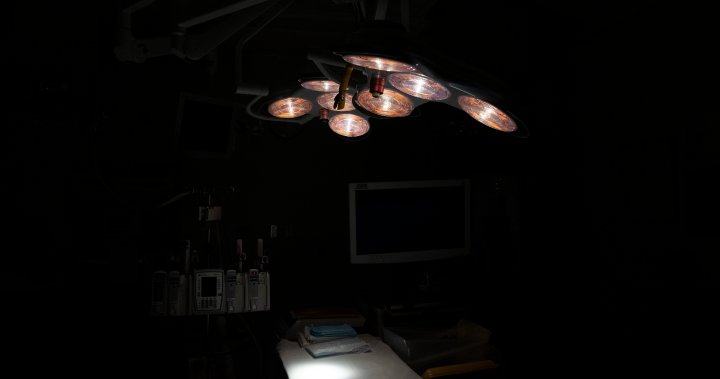Under the bright fluorescent lights of Toronto’s newest orthopedic clinic, Sara Matthews waited nervously for her knee replacement—a surgery she’d been told would take 18 months in the public system. Yet here she was, just four months after her referral, at a private facility performing publicly funded procedures.
“I thought I’d be living with pain until next summer,” the 64-year-old retired teacher told me during a recent visit to one of Ontario’s expanding network of independent health facilities. “I still can’t believe I didn’t pay a dime out of pocket.”
Matthews’ experience represents the new reality taking shape across Ontario, where Premier Doug Ford’s government is dramatically expanding the role of independent clinics in delivering OHIP-covered surgeries. The province announced yesterday it has completed over 27,000 additional orthopedic surgeries through these partnerships since 2022, with plans to perform 14,000 more this fiscal year.
The initiative aims to tackle Ontario’s stubborn surgical backlog that swelled during the pandemic. According to Ontario Health data, more than 250,000 patients were waiting for surgeries as of last December, with orthopedic procedures among the most delayed.
Health Minister Sylvia Jones framed the announcement as evidence the plan is working. “These additional surgeries mean thousands of Ontarians are receiving the care they need sooner and closer to home,” Jones said in a statement from Queen’s Park.
The province is partnering with 28 independent health facilities and hospital-managed clinics across 13 communities, including recent additions in Windsor, Kingston, and Kitchener-Waterloo. Officials claim the approach has decreased the average wait for knee replacements by 25 percent in participating regions.
But critics remain concerned about the approach’s long-term implications for Ontario’s health system. The Ontario Health Coalition warns that expanding private delivery risks fragmenting care and potentially diverting resources from hospitals already struggling with staffing shortages.
“We’re seeing nurses and technicians leaving hospitals for these facilities,” explained Natalie Mehra, the coalition’s executive director. “The government is creating a staffing crisis in one area while trying to solve a backlog in another.”
During my visits to three such clinics across southern Ontario, staff told a different story. Dr. James Robertson, an orthopedic surgeon who splits his time between Trillium Health Partners and a Mississauga independent facility, described the arrangement as complementary rather than competitive.
“The operating room efficiency at specialized clinics means I can perform four knee replacements in the time it would take to do three at the hospital,” Robertson explained. “That’s not because hospital staff work slower—it’s because hospitals necessarily handle emergencies and complex cases that disrupt schedules.”
This efficiency argument is central to the government’s defense of the model. Ministry data suggests independent facilities complete 20-30% more procedures per operating room hour compared to hospitals for these standardized surgeries.
For patients like Brampton’s Miguel Fernandez, who received hip replacement surgery at an independent clinic last month, the distinctions between public and private facilities seem largely academic.
“I don’t care who owns the building as long as my OHIP card works and I get quality care,” the 58-year-old warehouse manager told me. “I waited eight weeks instead of eight months—that’s what matters to me.”
The expanded surgical capacity comes with a $185 million price tag this fiscal year, according to ministry figures. The government insists costs per procedure remain comparable to hospital-based care while delivering more value through faster treatment.
Ontario Medical Association President Dr. Andrew Park cautiously supports the initiative while emphasizing the need for strong oversight. “These facilities must maintain the same standards as hospitals and remain fully integrated with the public system,” Park said in a phone interview.
For some healthcare workers, the expansion offers new opportunities. Nurse practitioner Amina Patel left a Toronto teaching hospital to join an independent surgical clinic in Scarborough, citing better work-life balance and focused care.
“I was burning out at the hospital,” Patel admitted. “Here, I work predictable hours and spend more time with each patient. It’s still public healthcare—just delivered in a more specialized environment.”
The Ontario Nurses Association remains skeptical, however. ONA President Erin Ariss argues the province should instead invest in public hospital infrastructure and better working conditions to address the backlog.
“We’re concerned about creating a two-tier system by stealth,” Ariss said. “Once these facilities are established, what prevents them from expanding into private-pay services alongside OHIP work?”
The government insists such concerns are unfounded, pointing to strict contractual requirements prohibiting queue-jumping or extra billing for OHIP-insured services.
Back in the waiting room, I met Guelph resident Terrence Williams, who had been skeptical about receiving care at a private clinic. “I worried it was the thin edge of the wedge toward American-style healthcare,” the 72-year-old former autoworker confessed. “But my family doctor assured me it’s still public healthcare, just in a different building.”
As Ontario continues expanding this model, the true test will be whether it genuinely reduces wait times system-wide or simply creates islands of efficiency that benefit some patients while leaving underlying healthcare challenges unresolved.
For Sara Matthews, philosophical debates about healthcare delivery models matter less than her renewed mobility. “I can garden again without pain,” she told me, eyes brightening. “Whatever they’re doing, it worked for me.”






